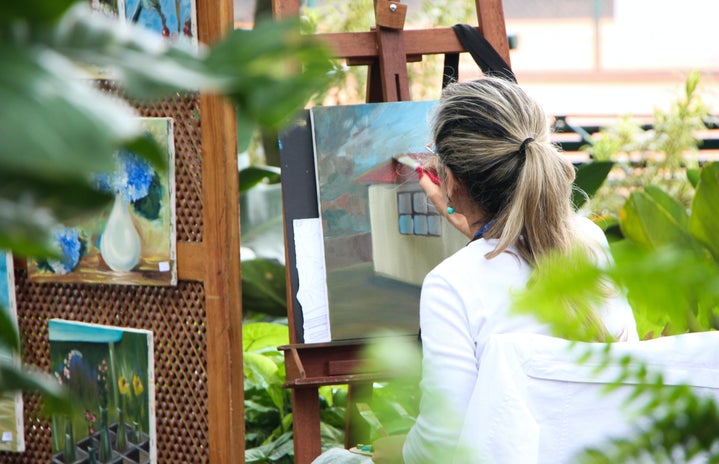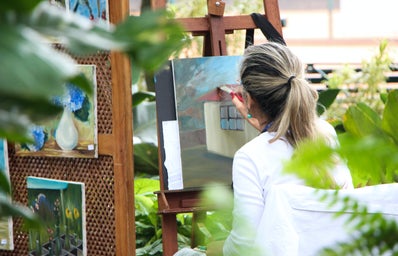Élisabeth Louise Vigée Le Brun was a painter during the late Rococo though she included elements of Neoclassical influenced by the Greeks and Romans. She was one of the fifteen women who gained full membership in the Académie between 1648 and 1793.
Image Credit: By Louise Élisabeth Vigée Le Brun – metmuseum.org, Public Domain
Madame LeBrun was taught how to paint by her father, an accomplished painter himself, through private lessons. By the time she was in her teenage years, she was painting portraits of nobility professionally. Later on, her art studio was seized because she was painting with a proper license. So she simply applied to the Académie de Saint-Luc and became a full member in order to continue her career.
Image Credit: By Louise Élisabeth Vigée Le Brun – pl.pinterest.com, Public Domain
Madame LeBrun caused several scandals with her paintings, one of which was a self-portrait with her daughter, showing her relaxed with a smile showing her teeth. This was unheard of at the time, as it was considered a convention of art for centuries not to show a smiling face showing the teeth. Marie Antoinette later granted patronage, and it opened the doors for Madame LeBrun’s career as a renowned portrait painter in the court. She painted over thirty paintings of the queen and her children.
Image Credit: By Louise Élisabeth Vigée Le Brun, Public Domain
While Madame LeBrun’s time as a court painter did bring her renowned, she also was faced with heavy criticism as a woman. Many people did not approve of how she depicted her subjects as relaxed and casual with their poses. Gossip spread around the court, claiming she did not paint the portraits herself and that they were actually painted by an assistant she was having an affair. Though Madame LeBrun did not listen to the gossip, she continued to encourage her subjects to relax and to speak during the portrait. This lead to the mouths of her subjects to be slightly opened in her painting, which became a signature style. During the French Revolution, LeBrun was forced to flee the country due to her connection with the royal family. She was in exile for twelve years but during that time she toured Europe. She painted the portraits of royals and nobility in Italy, Russia, Germany, Austria, England, and Switzerland.
Image Credit: By Louise Élisabeth Vigée Le Brun – Versailles, Public Domain
When Madame LeBrun worked in the French court, she was critiqued for her relaxed, casual showing of the subjects and her focus on maternal values with her children. Later, her artwork was praised as showing the intimate sides of her subjects and the intimations of her own life as a mother.
Image Credit: By Louise Élisabeth Vigée Le Brun – Unknown, Public Domain


